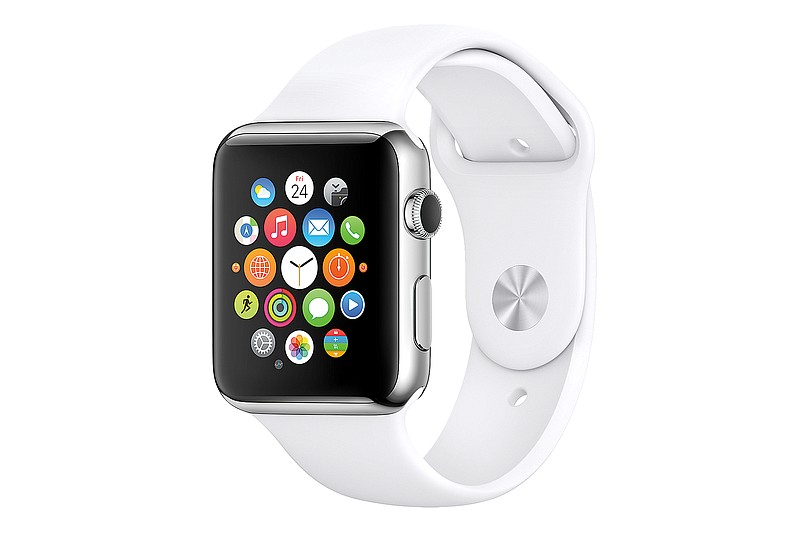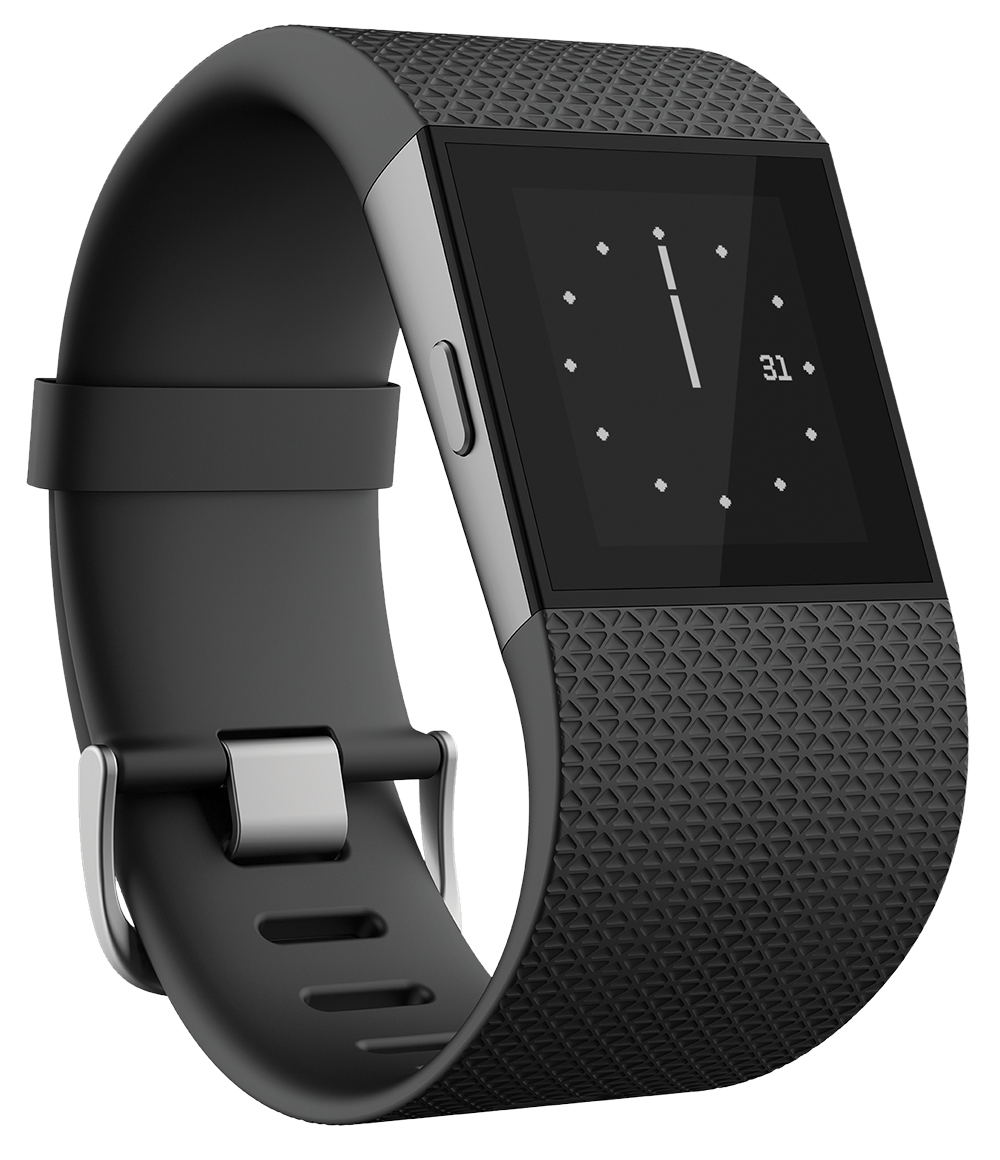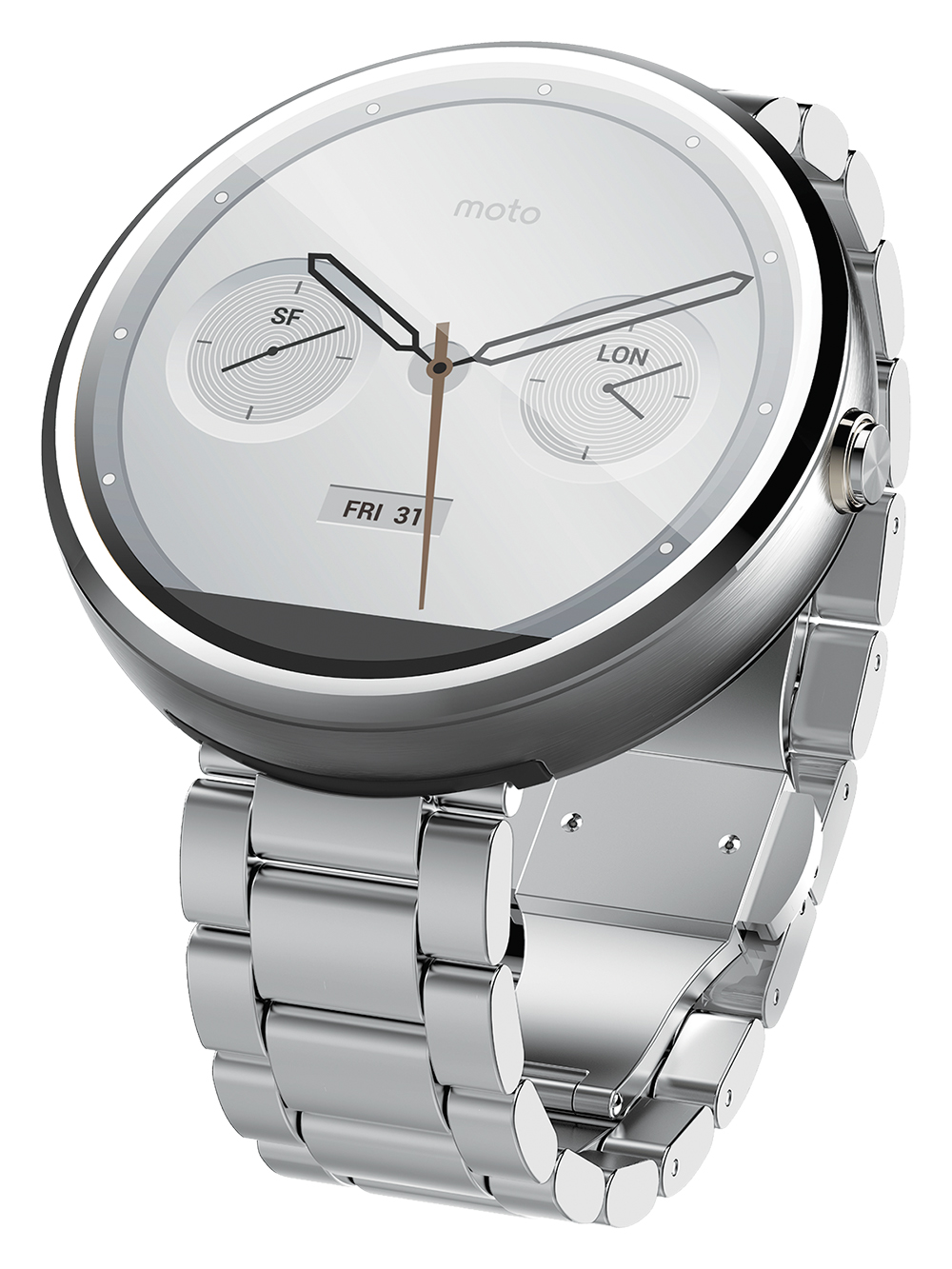Apple makes products that change the way we are able to communicate and work simultaneously."
Last September, after years of speculation, Apple formally announced the Apple Watch, its first entry into a new product market since the iPad's launch in 2010.
By that time, other tech firms had long since released their own smartwatches. Some, such as Sony and Samsung, were already several generations deep into their wearable product lines.
Sounding off
"Batman and Dick Tracy had this tech back in the 1940s. It took Apple 75 years to develop?" -- Ronnie Long, Cleveland, Tenn. "Is a cellphone not tiny and portable enough? Why would you need the watch?" -- Jessica Campbell, Chattanooga "I think if anybody has the slightest chance of making the smartwatches big, it's Apple. I won't be buying one right away, and I said the same thing about a smartphone. If they become more affordable and mainstream, I'll probably get one. I love the idea behind the smartwatch." -- Marissa Monroe McCauley, Chattanooga "I have several Apple products, and there is no way I will buy this watch. It's a phone for your wrist. You have to charge it nightly. You have to treat it gingerly. It's $1,200!" -- Brandi Docev, Fairbanks, Alaska (formerly of Cleveland, Tenn.) "I have a phone for that." -- Melanie Carter, Chattanooga
Despite the increasingly crowded smartwatch field, however, critics and consumers were holding their breath, waiting to see if Apple's smartwatch -- or "iWatch," as the rumor mill insisted on calling it -- could ignite the same fervor for wrist-based computing that the iPhone and iPad had done for smartphones and tablets.
"For the smartwatch industry's future outlook the entry of Apple's 'iWatch' will be the biggest driver to boost the market's overall shipments," according to a 2013 report by analysts at DigiTimes Research.
But Chattanoogans' response to the Apple Watch announcement last fall -- and to a second event on March 9 unveiling its April 24 release has been decidedly lukewarm. Of the 30 respondents to a Facebook post asking for comments about the announcement, more than 75 percent were either opposed to smartwatches as a device or to Apple's product in particular.
"I have a remote control for my car radio; I have no idea why. I doubt I would have any use for an Apple Watch for exactly the same reason," writes Steve Hill, formerly of Dalton, Ga., and now living in Newnan, Ga. "I'm athletic enough to reach into my pocket when I need my phone."
Others described it as too expensive. The Apple Watch will be available in three tiers, beginning with the $350 Apple Watch Sport Edition and topping out at $17,000 for the hardened-gold-plated -- and confusingly named -- Apple Watch Watch Edition.
"I think Apple will be disappointed," writes Marissa Monroe McCauley, 25, of Chattanooga. "Phones were/are just as expensive, but people are willing to get them because you have discounted contract deals with the wireless phone companies. I don't see an opportunity for those kinds of discounts [for smartwatches] and think the sales will turn out poorly."
But similar concerns were leveled at Apple on the heels of the announcement of the iPad, which many tech writers decried as "just a big iPhone."
"The Apple iPad met base-level expectations," wrote Business Insider's Dan Frommer on the day of the tablet's announcement on Jan. 27, 2010. "[Former Apple CEO Steve] Jobs introduced something that is probably going to sell in the range of a few million units this year. Not the company's next huge growth story."
Yeah, well, 3 million iPads sold in the first 80 days after it went on sale. To date, Apple has sold more than 200 million tablets. In the face of that success, some locals hope the company's smartwatch will bottle lightning again.
"Apple makes products that change the way we are able to communicate and work simultaneously," writes Chattanoogan Shelton Brown. "This will be another addition to their legacy."
When the Apple Watch releases next month, however, the company will be competing in a crowded field, instead of the historically virgin ground it has entered in the past. Here are some of the current and forthcoming smartwatches Apple will be competing with for consumers' attention.
Photo Gallery
Cornerstone Pub & Deli
North Little Rock's Cornerstone Pub hosted live music on Saturday night, June 30
Apple Watch
Billed as Apple's "most personal device yet," it emphasizes high-fashion sensibilities with its mix-and-match selection of interchangeable bands and tiered sport, mid-range and gold-encased luxury editions. The watch runs Apple's specially designed Watch Operating System. Apple Watch includes a "Taptic Engine" pressure-sensitive input system on a screen that allows users to hyper-customize the device's watch face. A microphone offers digital assistance from Siri and the ability to make phone calls, "Dick Tracy" style, directly from the device. Many of the communication, productivity and health-tracking functions Apple is touting, however, are dependent on being tethered to an iPhone.
* Features: Customizable digital face, pressure-sensitive touchscreen, infrared/optical heart rate sensors, 8 gigabytes storage.
* Compatibility: iOS devices (iPhone 5 or later/iOS 8.2 or later).
* Price: Apple Watch Sport, $350-$400; Apple Watch, $550-$1,100; Apple Watch Watch Edition, $10,000-$17,000.
* Availability: Releases April 24.
Pebble Time
Pebble Technologies struck a chord with backers in 2012 when it launched a Kickstarter campaign to fund its namesake smartwatch, which featured a black-and-white screen. By the end of the 37-day campaign, Pebble raised $10.2 million, the second most of any project in Kickstarter's history. A slightly revamped model, the Pebble Steel, released in February 2014, featuring a thinner, more elegant design. Pebble is back on Kickstarter to raise funds for the company's third smartwatch, the Pebble Time. The company has already set another record by raising more than $18 million, more than a week before the campaign ends on Friday. The Time's e-paper display -- which looks like ink on paper -- can display 64 colors and a new microphone lets users dictate responses to texts.
* Features: Always-on e-paper display, microphone for dictation.
* Compatibility: iOS devices (8.0 or later) and Android devices (4.0 or later).
* Price: $200 for Pebble Time ($160 for early backers of the Kickstarter, which ends Friday); $300 for Pebble Time Steel ($250 for Kickstarter backers).
* Availability: May (Pebble Time) and July (Pebble Time Steel).
Neptune Suite
Unlike many smartwatches that rely on smartphones to access the bulk of their functions, the Neptune Suite is a collection of devices built around a smartwatch that functions entirely independent of a smartphone. The smartwatch, dubbed the Neptune Hub, features a 2.4 curved-screen and runs Android Lollipop, the same operating system used in traditional smartphones. It serves as the Suite's primary computing and communication device, capable of making calls, sending texts, web browsing and playing multimedia without pairing to another device. If they need more room to work, users can pair the Hub to two touchscreens devices included in the Suite: the 5-inch Pocket Screen and 10-inch Tab Screen.
* Features: Built-in 2G/3G/4G modem, built-in GPS, heart rate sensor, 64 gigabytes storage; Suite includes two camera-equipped touchscreens, wireless keyboard, HDMI dongle and wireless headphone/charging cable.
' Compatibility: Functions independently of other devices.
* Price: $900 retail ($600 for first 1,000 backers of the company's IndieGogo campaign, $650 for subsequent backers).
* Availability: Estimated shipment date of February 2016.
Fitbit Surge
Unlike some companies that are just now dipping their toes into the wearable market, Fitbit's first smartwatch builds on years of experience with health- and fitness-oriented devices. While some smartwatches tout broad feature sets that mimic those of smartphones, the Surge's design targets physically active consumers with a rugged, no-frills design. Although it pairs with smartphones to provide boiler-plate smartwatch functionality such as text and call notifications and music control, the Surge is billed as "the ultimate fitness super watch" whose functions work independent of another device.
* Features: Heart rate monitoring, step and caloric burn counters, motion sensor for sleep monitoring, altimeter for detecting elevation change.
* Compatibility: iOS devices (8.0 or later)/Android (4.3 or later)/Windows devices (8.1 or later).
* Price: $250.
* Availability: Now.
LG G Watch R
When it was released last June, the original G Watch was both LG's first smartwatch model and a flagship device for Google's Android Wear. A few months later, LG unveiled the G Watch R, which traded the original's rectangular face for a circular one. The G Watch R's screen also received some spit and polish, upgrading to an OLED display that critics have praised for brightness and a rich color palette.
* Features: OLED screen, gyroscope/accelerometer/compass/barometer, heart rate monitor, 4 gigabytes storage.
* Compatibility: Android devices (4.3 or later).
* Price: $300.
* Availability: Now.
Samsung Gear S
The latest model in Samsung's rapidly changing line of Gear wearables features a built-in 3G modem that allows users to send and receive calls and texts, browse the Web or stream music even when a phone isn't nearby. However, users must have a Samsung phone to activate the Gear S. The watch's massive two-inch face looks similar to the Apple Watch's, and it has been praised for its colorful, curved Super AMOLED (active-matrix organic light-emitting diode) screen. The band, however, is proprietary and cannot be changed.
* Features: Accelerometer/barometer/gryoscopic/geomagnetic/ultraviolet light sensors, heart rate monitor, dock doubles as backup charger, 4 gigabytes storage.
* Compatibility: Samsung Galaxy phones with Android (4.3 or later).
* Price: $350 (data plans available through Sprint, T-Mobile, Verizon and AT&T).
* Availability: Now.
Moto 360
A circular counterpoint to the Apple Watch's rounded rectangle, the 360's broad, Gorilla Glass face looks every inch like a traditional wristwatch. Running Google's Android Wear operating system, it features digital assistance via Google Voice Search. Like the Moto X smartphone, with which it will pair, Motorola's first smartwatch can be custom built with a selection of materials for the case, band and watch face.
* Features: Customizable digital appearance, pedometer, optical heart-rate monitor, 4 gigabytes storage.
* Compatibility: Android devices (Android 4.3 or later).
* Price: $250-$330.
* Availability: Now.
Garmin Vivoactive
Garmin has been a major player in GPS equipment for years, and the company's GPS-equipped watches are well-known in the fitness world. Much like the Fitbit Surge, the Vivoactive is Garmin's first foray into smartwatch territory and emphasizes its athletic pedigree over traditional smartwatch features. The Vivoactive tracks performance across a range of disciplines, from a runner's pace to how far a golfer is from the cup to the interval between a swimmer's strokes. A paired phone must be nearby for the Vivoactive to check the weather, receive text notifications or other non-fitness-oriented functions.
* Features: Water-resistant, digitally customizable watch face, heart rate monitoring via additional accessory.
* Compatibility: iOS devices (iPhone 4S or later) and Android devices (4.3 or later).
* Price: $250.
* Availability: Slated to ship in first quarter of 2015.
Sony Smartwatch 3
When Sony released the first generation Smartwatch in 2013, it was praised for its looks but criticized for its dependence on a smartphone. Two years and two generations of Smartwatches later, Sony's third version is now waterproof and features a built-in GPS that allows it to retain some fitness monitoring abilities independent of users' phones. The watch uses Google's Android Wear operating system specifically designed for wearables, making it possible for developers to create new apps for it.
* Features: Built-in GPS, interchangeable rubberized bands, 4 gigabytes storage.
* Compatibility: Android devices (4.3 or later).
* Price: $300.
* Availability: Now.
Contact Casey Phillips at cphillips@times freepress.com or 423-757-6205. Follow him on Twitter at @PhillipsCTFP.



